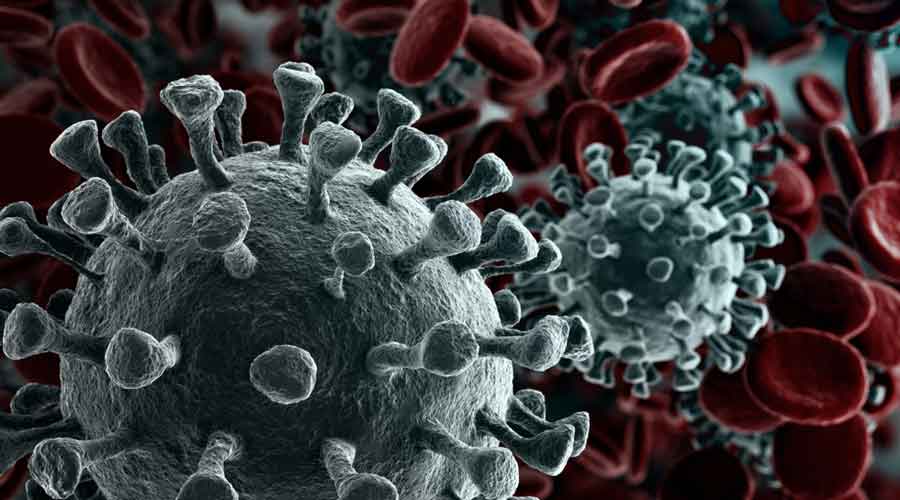Scientists have for the first time traced the step-by-step chronological evolution of an inconspicuous SARS-CoV-2 strain into a variant with 50 per cent mutations shared by omicron over seven months in a single patient.
Their research provides insights into how SARS-CoV-2, the virus that causes Covid-19, can gain mutations that allow it to evade the immune system, while replicating over an unusually prolonged period of time in a patient with compromised immunity.
Since the global spread of SARS-CoV-2 started in early 2020, the virus has acquired many new genetic mutations leading to so-called “variants of concern” such as the delta or omicron that have fuelled fresh worldwide surges.
Now, virologist Sissy Therese Sonnleitner in Austria and her colleagues have documented how the virus, while multiplying in a patient who had been diagnosed with lymphoma in 2015, acquired 15 mutations also observed in other variants of concern.
The patient first tested positive for Covid-19 in November 2020 and continued to shed the virus for around seven months, allowing scientists the unique opportunity to isolate the sequence each time she tested positive.
Most patients infected with SARS-CoV-2 eliminate the virus days after the onset of symptoms. But, the researchers believe, the lymphoma or the chemotherapy the patient received had contributed to an immunocompromised status that led to prolonged viral shedding.
“As far as we know, this study is the first to demonstrate step-by-step chronological development of an inconspicuous SARS-CoV-2 into a variant that shares 50 per cent mutations with omicron,” Sonnleitner told The Telegraph through email.
Sonnleitner and her co-workers from institutions in Austria and Germany on Monday posted a paper — which is yet to be peer-reviewed — describing their findings on medRxiv, an online archive for research papers.
The research also provides insights into how an immunocompromised status in an infected patient can push the virus into acquiring mutations that allow it to evade immune responses. “It gives good indications as to which conditions must be present for a variant of concern to develop,” she said.
The scientists isolated and sequenced the virus from swabs taken 73, 93, 109, 129, 133, 143, 158, 164, 171, 182, 192, and 207 days after the patient first tested positive. As the virus multiplied, new mutations emerged — some temporary, some long-lasting.
Overall, 76 per cent of all mutations and 88 per cent of the mutations on a key spike protein — which the virus uses to enter human cells — also evolved in other variants of concern, mainly in either alpha that emerged in late 2020 or omicron that emerged in late 2021.
The scientists say their study underlines the importance of protecting patients with compromised immunity from Covid-19 and highlights specific sets of mutations that give the virus an advantage but could also serve as targets for future vaccination or treatment strategies.
The variant that the European researchers watched emerge didn’t get a chance to spread.
The patient was tested early and under quarantine for long periods. “We think that repeated testing, responsible behaviour by the patient and actions by health authorities prevented the variant from spreading. We can safely say the variant could not spread,” Sonnleitner said.
The patient was finally able to eliminate the infection and labelled as recovered from Covid-19.










